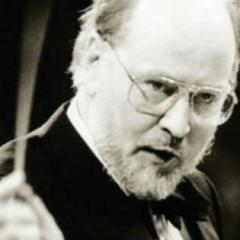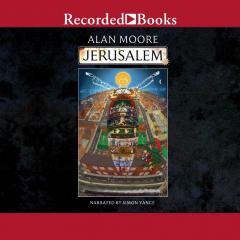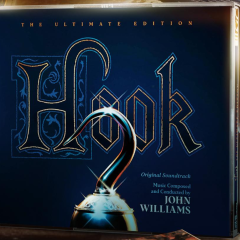Leaderboard
Popular Content
Showing content with the highest reputation on 20/02/14 in all areas
-

John's most "genuine" scores/pieces
Sharkissimo and one other reacted to tedfud for a topic
good idea. I would nominate CEOTFK. Almost unique amongst film scores in it's blending of so many different techniques. There are almost all of williams favourite tricks on display and yet put together in such a unique way. I have always wondered why he never did a complete piece for the concert hall out of it. Copyright i suppose. There's Ligeti and debussy , Strauss and Stravinsky all presented in a truly individual way...and often at the same time.....I suspect this is music closest to him. The wonderful end when all the dissonance gives way to glorious lushness. The Five note riff arriving in Russian splendour ....simply majestic. If anybody ever gives me grief about film music not having the same power and interest of concert music I always through that at em !..........always shut's them up. T2 points -

Close Encounters Suite - Philadelphia Orchestra
KK reacted to nightscape94 for a topic
For anyone in the area, the Philadelphia Orchestra, for the first time in their subscription concert history, has programed a Williams piece. The interesting part here is that they have a chorus scheduled. The first half of the bill also includes a piece by Lindberg for chorus and orchestra. It can possibly be implied that they will use the chorus for Close Encounters too (it wouldn't seem sensible if they didn't). That would mark the first time I've seen the work performed in its original form. April, 2015 Stéphane Denève - Conductor The Philadelphia Singers Chorale - Mixed chorus programWilliams - Excerpts from Close Encounters of the Third Kind Lindberg - Graffiti, for chorus and orchestra INTERMISSION Prokofiev - Excerpts from Romeo and Juliet1 point -
1 point
-

Star Wars Episode VII: The Force Awakens (JJ Abrams 2015)
Joni Wiljami reacted to Henry B for a topic
Why is it such a moral offense for posters not to fix their typos? We can understand them fine, and this is a discussion board, not a scholarly journal.1 point -

What Is The Last Score You Listened To? (older scores)
Marian Schedenig reacted to Jonesy for a topic
The Tradition of the Games Basically, this is a delightful gem from Mr. Poledouris.1 point -
Close Encounters Suite - Philadelphia Orchestra
nightscape94 reacted to Marian Schedenig for a topic
That's a cool pairing actually, since R&J is basically film music. Seeing the whole ballet staged live is amazing.1 point -
1 point
-
John Williams Darker Moments
Muad'Dib reacted to Sharkissimo for a topic
Since I've been trying to get you onto Rosenman recently, I always thought this cue reminded me of his writing a great deal. The way Williams orchestrates this for keyboards/piano doubled by strings and staggered entrances of solo woodwinds, with the fibre muted and stopped horns outlining the bassoon/viola pedal point below, along with the carefully placed hairpins. It's like a throwback to some of his work on the Irving Allen disaster flicks. Regarding that seriously chilling open cluster in the second chord, I've just noticed that if you collapse it into the 2-line octave (C5, C#5, D5 etc.) you can revert it back to the original voicing by doing this bit of octave transferral: C -> 1 up, C# -> 1 down, D -> 1 up, D# -> remains the same, E -> 1 down, F -> 1 up. Discounting the D#, it's amazing how consistent it is. Another point - that cluster that spans a perfect fourth gets transposed down a tone (T10) for the next chord (A#-B in muted trombones, C-C# in muted horns (both doubled by interlocking violins and violas), and the D-Eb slide in the 12 celli. Must be more than a sheer coincidence. Shit just got real.1 point -

Datameister's Cue Analysis Thread
Sharkissimo reacted to Ludwig for a topic
I think you're right to put the chord in a polytonal context. After hearing clear polytonal chords in the first eight bars, we're now primed to hear the last few chords as such. But there's an important difference. The last chords now include biting semitone dissonances that can't be explained strictly with polytonality. There still is the sense of an Em chord below and an Ebm chord above. It's just that there are semitones that are causing clusters. I suggested the term "bristling" for this effect, where semitone dissonances are added to triads, and I think it describes it pretty well - like thorns on an otherwise smooth vine. In this case, the semitones clash with the Ebm chord above or, later, the D augmented chord (Daug). The nice thing about this interpretation is that it allows us to understand a connection with the previous polytonal chords in the cue - and notice that the triads here are a semitone apart, just as in the previous chords. But here, we also have the dissonance with the Em chord below. So there are TWO dissonant factors at work: polytonality AND bristling. It's a nice way of ratcheting up the tension with clusters but still retaining triads to keep the cue sounding coherent and smoothly lead our emotional response from one nuance to another. In my analysis below, the chords are shown in the top two staves, and their analysis in the bottom two, where I use filled-in noteheads to show the bristling notes and whole notes to show the triads. I describe the C# in the bass as a kind of neighbour note that swings between the two statements of E. What do you say? Is this how you hear it?1 point -

John Williams' Oscar Nominee Questionnaire for The Book Thief
SafeUnderHill reacted to mrbellamy for a topic
Even his handwriting is full of surprises and mysteries to be uncovered!1 point -
Close Encounters Suite - Philadelphia Orchestra
KK reacted to Joni Wiljami for a topic
I hope The Death of Juliet (from suite nr.3) is included in the excerpts. One of the most beautiful pieces ever.1 point -

John Williams' Oscar Nominee Questionnaire for The Book Thief
SafeUnderHill reacted to BloodBoal for a topic
1 point -

John's most "genuine" scores/pieces
Sharkissimo reacted to tedfud for a topic
if goldsmith was lennon...then JW is definitely paul. He's capable of darkness but i can't help feeling he is always waiting for the sun to poke through his music. He also seems to really enjoy being clever. Not in an ostentatious way...but buried deep there is always intricacy in the machine. A watchmaker at heart ...as stravinsky said of Ravel.... t1 point -

Upcoming Films
Once reacted to #SnowyVernalSpringsEternal for a topic
It's a Biblical tale, of course it's dumb!1 point -
1 point
-
Composers Challenge VIII: Creation
Gnome in Plaid reacted to KK for a topic
To all fellow composers!1 point -

Composers Challenge VIII: Creation
wanner251 reacted to Dixon Hill for a topic
Does that mean we can submit scores, and the judges will be using the most complex DAW of them all, their brains?1 point -

Composers Challenge VIII: Creation
Gnome in Plaid reacted to Incanus for a topic
Just keep the pencil moving! I demand KK to disqualify anyone daring to use programmes with coloured bars in them to compose for this competition. Notes, black dots on white sheet music, that's the way to go!1 point


